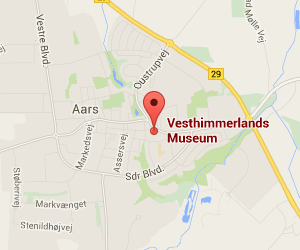Manor house
With a history that goes all the way back to the Viking Age, Aggersborggaard is one of the country's oldest manors. The continuity is emphasized by the fact that today the barn of Aggersborggård occupies the southernmost portion of the fortress rampart and ditch. In the 970s, Harald Bluetooth/Gormsson built the largest of a total of five Danish ring fortresses on the site, which until 1579 was royal property. The Viking fortress was only in use for 10-20 years, but from written sources it is known that King Canute the Holy in 1086 had a royal estate at Aggersborg, as it tells of a revolt against the king, who fled across the fjord, while many of his men were killed at Aggersborg.
Aggersborg is later mentioned in King Valdemar's Land Register from the first half of the 13th century and later in 1272, where King Erik Klipping stayed on the site and issued a still preserved diploma, which exempted Øm Monastery from certain services and taxes. In King Valdemar Atterdag's time, Aggersborg is mentioned again, as Niels Eriksen Gyldenstjerne was commanded by the king to rebuild the castle, which was burned down by a Jutland nobility revolt in probably 1368/1369. Probably the same castle, which was found in 2009 in connection with the project "The King's Fortresses".
The few times Aggersborg has since been mentioned in the Middle Ages, it is referred to as a manor house, and when Frederik the 2nd in 1579 exchanged land with the noblewoman Vibeke Podebusk, it is a property which is called "the king's manor house in Aggersborg". The manor has since been owned by a number of different genera. In the 17th century it burned twice, first by accident and then during the Torstensson War. Today, Aggersborggaard appears as a beautiful three-winged half-timbered building built in 1756-58 by the bourgeois Christen Madsen Speitzer and his wife Anna Margrethe Lund.
Aggersborggaard is privately owned by and there is no public access.
Aggersborg is later mentioned in King Valdemar's Land Register from the first half of the 13th century and later in 1272, where King Erik Klipping stayed on the site and issued a still preserved diploma, which exempted Øm Monastery from certain services and taxes. In King Valdemar Atterdag's time, Aggersborg is mentioned again, as Niels Eriksen Gyldenstjerne was commanded by the king to rebuild the castle, which was burned down by a Jutland nobility revolt in probably 1368/1369. Probably the same castle, which was found in 2009 in connection with the project "The King's Fortresses".
The few times Aggersborg has since been mentioned in the Middle Ages, it is referred to as a manor house, and when Frederik the 2nd in 1579 exchanged land with the noblewoman Vibeke Podebusk, it is a property which is called "the king's manor house in Aggersborg". The manor has since been owned by a number of different genera. In the 17th century it burned twice, first by accident and then during the Torstensson War. Today, Aggersborggaard appears as a beautiful three-winged half-timbered building built in 1756-58 by the bourgeois Christen Madsen Speitzer and his wife Anna Margrethe Lund.
Aggersborggaard is privately owned by and there is no public access.


